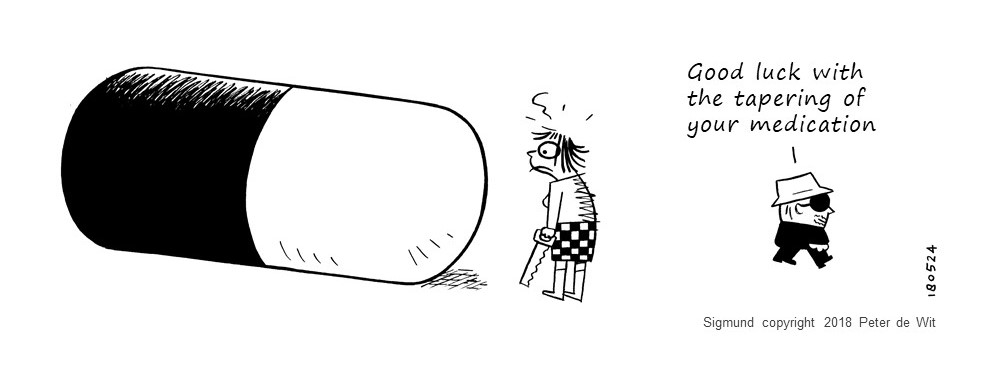
Withdrawal symptoms may be so severe that patients are unable to continue reducing the dose, regardless of the medication’s efficacy. In 2010, the Tapering Project was started to address these problems through the development of tapered doses of medication provided in strip packaging: tapering strips.
The reduction or discontinuation of psychiatric medications such as antidepressants, antipsychotics or anxiolytics can cause physical and psychological withdrawal and rebound symptoms.
Withdrawal symptoms may be so severe that patients are unable to continue reducing the dose
Regardless of the medication’s efficacy. Tapering strips allow patients to regulate the tempo of their dose reduction over time and enable them to taper more gradually, conveniently and safely than is possible using currently available standard medication, thereby preventing withdrawal symptoms.

In a tapering strip, medication is packaged in a roll or strip of small daily pouches
Each pouch is numbered and has the same or slightly lower dose than the package before it. Strips come in series covering 28 days and patients can use one or more strips to regulate the tempo of their dose reduction over time. Dose and day information printed on each pouch allow patients to precisely record and monitor the progress of their reduction.
Tapering strips are developed for medication in cases where doing so improves the medical care available and meets an unmet need.
Professor Jim van Os on recent research on taperingstrips
World tapering Day webinar presentation, november 2022: Jim van Os on recent research on taperingstrips
Looking for more information on tapering strips?
- More information can be found on taperingstrip.com




